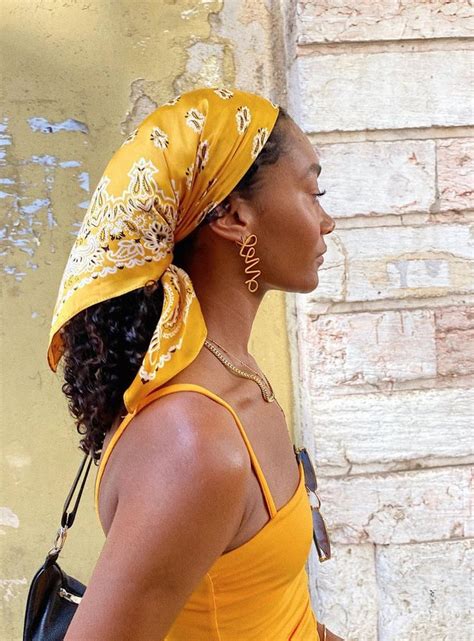Head Scarves & Wraps for Cancer Patients: A Guide to Comfort, Style, and Confidence

## Introduction
A cancer diagnosis brings forth a myriad of physical, emotional, and practical challenges for patients. One often overlooked aspect is the impact on hair loss caused by chemotherapy and other treatments. Head scarves and wraps can provide both practical and psychological comfort during this challenging time. This comprehensive guide explores the different types of head coverings, their benefits, and how to choose the best option for individual needs.
## Practical Benefits of Head Scarves and Wraps
- Protection: Head scarves and wraps shield the scalp from the elements, such as cold, wind, and sun exposure.
- Moisture Wicking: Some fabrics, like cotton and bamboo, wick away moisture and keep the scalp dry and comfortable.
- Pressure Reduction: Wraps can help reduce pressure on tender scalps, especially after surgery.
- Support: Head coverings can provide support to the head and neck, particularly for patients experiencing fatigue or dizziness.
## Psychological Benefits of Head Scarves and Wraps
- Concealment: Head scarves and wraps can discreetly cover hair loss, preserving privacy and reducing self-consciousness.
- Expression of Identity: Scarves and wraps come in a wide range of styles, colors, and patterns, allowing patients to express their individuality and stay connected to their sense of self.
- Confidence Boost: Wearing a stylish head covering can improve self-esteem and provide a sense of control during a time of vulnerability.
## Types of Head Scarves and Wraps
### 1. Pre-Tied Turbans
- Easy to put on and adjust
- Provide full coverage and support
- Available in various fabrics and designs
### 2. Bandanas
- Versatile and comfortable
- Can be tied in different ways to create unique looks
- Available in both printed and solid colors
### 3. Head Wraps
- Long, rectangular scarves wrapped around the head
- Offer great flexibility and coverage
- Can be knotted, pleated, or styled in various ways
### 4. Beanies
- Warm and comfortable
- Cover the entire head, including ears
- Available in knit and fleece fabrics
### 5. Caps
- Similar to beanies, but with a shorter brim
- Provide warmth and protection
- Often made of cotton or wool
### 6. Halo Headbands
- Modern and stylish
- Slide over the head and stay in place without tying
- Provide partial coverage and can be layered with other head coverings
### 7. Sleep Caps
- Soft and comfortable
- Keep the scalp warm and protected during sleep
- Available in satin or silk to reduce friction and promote hair growth
## Choosing the Best Head Covering
When selecting a head scarf or wrap, consider the following factors:
- Comfort: It should be soft, gentle on the scalp, and not cause irritation.
- Coverage: Determine the desired level of coverage, from partial to full.
- Style: Choose a style that complements personal preferences, clothing, and lifestyle.
- Maintenance: Opt for easy-to-care-for fabrics that can be washed and dried easily.
## Tips for Wearing Head Scarves and Wraps
- Use a soft liner: Wear a thin, breathable liner under the head covering to reduce friction and minimize discomfort.
- Experiment with different styles: Try various ways of tying or draping the scarf to create different looks.
- Accessorize: Use decorative pins, clips, or jewelry to add a touch of personality and style.
- Protect from the elements: Apply sunscreen or wear a hat when wearing a head covering outdoors to shield the scalp from sun exposure.
## Table 1: Types of Head Coverings and Their Benefits
| Type | Benefits |
|---|---|
| Pre-Tied Turbans | Easy to wear, full coverage, support |
| Bandanas | Versatile, comfortable, variety of styles |
| Head Wraps | Flexible, customizable coverage, stylistic options |
| Beanies | Warm, complete coverage, comfortable |
| Caps | Warm, practical, often cotton or wool |
| Halo Headbands | Modern, partial coverage, layerable |
| Sleep Caps | Soft, protective during sleep, promote hair growth |
## Table 2: Choosing the Right Head Covering for Individual Needs
| Factor | Considerations |
|---|---|
| Comfort | Soft, breathable fabrics, avoid irritation |
| Coverage | Partial to full coverage, depending on preference |
| Style | Personal preferences, clothing, lifestyle |
| Maintenance | Easy-to-care-for fabrics, washable and dryable |
## Table 3: Tips for Wearing Head Scarves and Wraps
| Tip | Purpose |
|---|---|
| Use a soft liner | Reduce friction, increase comfort |
| Experiment with styles | Create unique looks, find what suits best |
| Accessorize | Add personality and style |
| Protect from the elements | Sunscreen or hat outdoors for scalp protection |
## Conclusion
Head scarves and wraps are essential accessories for cancer patients, providing both practical and psychological benefits. By understanding the different types of head coverings, choosing the best option for individual needs, and following these helpful tips, patients can find comfort, style, and confidence amidst treatment. Remember, hair loss is temporary, but the strength and spirit of cancer patients is enduring.
